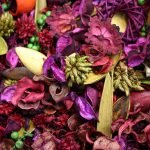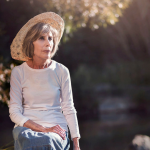The “White Plague”
Clinical Pearls
Sussanna Czeranko, ND, BBE
Like a serpent in the grass or among stones lying in ambush for its prey, consumption often begins to do its destroying work in some part of the system before it shows itself openly.
-Father Sebastian Kneipp, 1896, p. 240A number of years ago, a young man then twenty-two years of age, went back to Germany to die of consumption—‘given up’ by all the medical men who had had anything to do with him.
-Benedict Lust, 1904, p. 145The public believes in [consumption’s] incurability, because it relies upon the medical profession, who have certainly proved, by their methods, that it is incurable.
-August F. Reinhold, 1900, p. 184
 There is a case to be made that tuberculosis was the catalyst, or at least a providential accident, that directly led to the birth of the naturopathic profession in North America. If Benedict Lust had not been virtually abandoned by the allopathic physicians at the time and on his deathbed, and had he not found Father Sebastian Kneipp for treatment, perhaps naturopathy would have taken a much different turn. At age 22 years, Lust was diagnosed as having advanced-stage “consumption” in New York City. He decided to return while he still could to Germany to die. Mercifully, serendipity propelled him to Wörishofen, and under Father Kneipp’s water cure care he survived. He “started to take the cure, and his health began to improve from the very start. In eight months, he was in the enjoyment of perfect health” (Lust, 1904, p. 145).
There is a case to be made that tuberculosis was the catalyst, or at least a providential accident, that directly led to the birth of the naturopathic profession in North America. If Benedict Lust had not been virtually abandoned by the allopathic physicians at the time and on his deathbed, and had he not found Father Sebastian Kneipp for treatment, perhaps naturopathy would have taken a much different turn. At age 22 years, Lust was diagnosed as having advanced-stage “consumption” in New York City. He decided to return while he still could to Germany to die. Mercifully, serendipity propelled him to Wörishofen, and under Father Kneipp’s water cure care he survived. He “started to take the cure, and his health began to improve from the very start. In eight months, he was in the enjoyment of perfect health” (Lust, 1904, p. 145).
Dubbed as the “white plague,” phthisis, tuberculosis, or consumption at the turn of the 20th century, it was ranked along with pneumonia as the leading cause of death in America. According to Kern: “The term tuberculosis was first given by Schoenlein in 1859. . . . The word phthisis taken from Greek was also given to this disease meaning ‘wasting’” (1913, p. 156). In fact, one-third of all Americans in 1900 died of pneumonia, tuberculosis, or diarrhea (Centers for Disease Control and Prevention, 1999). Half of the adults who contracted tuberculosis died (Lust, 1909, p. 374).
The recognition that pollution and poor living situations were implicated in tuberculosis created a search for healthier environments in which patients with consumption could convalesce. In Europe and America, this quest for the right climate and geographical area for patients with the disease was a key focus of the climatologists. In an 1891 article on the benefits of the Colorado climate for patients with consumption, Dodge writes: “The respiration and circulation are accelerated; the chest expansion is increased; there is a desire to draw in long, deep draughts of the invigorating air and a feeling of strength and stimulation pervades the individual” (p. 183).
Consumption was attributed to poisoned air and badly ventilated and insufficiently lighted houses (Metcalf, 1901b, p. 73). The early NDs embellished the standard medical protocols of fresh air environments with hydrotherapies. Water cure pioneers Priessnitz and Kneipp deemed that consumption was treatable and curable. From their perspective, for the cure to be effective, the treatment needed to focus on reestablishing the lost harmony with nature. The priessnitzian water cure methods recognized that “nature is the sole and only physician” (Metcalf, 1901b, p. 72). Metcalf stated: “When there is bad or contaminated water, air poisoned by manufactories, insanitary dwellings, lack of food, and the like, there is not much chance for the human being, whose health is conditioned on wholesome surroundings, not only in respect to pure air, but also in respect to pure water, wholesome food, and habitations” (1901a, p. 44).
The NDs’ respect for and love of nature were a perfect foundation for bringing their patients back to nature in the form of healing centers, where recovery was likely with the right protocol of air, water, and life balance. Metcalf wrote: “The earliest of the sanatoria for consumption was established by Dr. Brehmer at Goerbersdorf in Silesia, so long ago as 1854, two years, that is, after the death of Priessnitz” (1901b, p. 71). Indeed, the successful treatments for consumption practiced in the 19th century were advanced by Priessnitz: “Priessnitz’ patients fifty years ago [about 1850] were encouraged to walk about in the pine woods . . . to remain in the open air as much as possible, to drink copiously of the water from the springs . . . to enjoy the scenery, to take delight in the fragrance of the pine” (Metcalf, 1901b, p. 72). Metcalf continues: “It is a physiological impossibility that any consumptive can be cured unless he largely breathes a pure atmosphere, and that implies a necessity of being out of doors” (1903, p. 85). There is little disagreement among physicians that patients who could afford to move from the city to the country to convalesce recovered from the white plague (Shattuck, 1886, p. 65).
Open-air Treatment
Open-air treatment or fresh air was essential for the treatment of tuberculosis, most particularly for lung function but also for the skin itself. The importance of the skin in its depurating effect on the blood was highly esteemed by the early NDs in the treatment of tuberculosis. Treating the skin was essential in the early hydropathic protocols in exercising the “depurating powers of the Turkish bath and the wet sheet packs” (Metcalf, 1903, p. 87). The wet sheet pack was considered the most preferred method of detoxing the body by inducing perspiration.
Significantly, orthodox MDs considered the naturopathic approach ineffective, notwithstanding the documented powerful results. Metcalf reports at the time: “For generations the medical profession has been sneering at hygienic measure, and what they were pleased to call quackery. Even while they were making use of the establishments devoted to the water-cure as forlorn-hope resorts to which to send their patients when their own methods had failed” (1903, p. 84). However, Kneipp’s numerous sanitaria in Germany are testimonials to his ability to make water work for patients with consumption. In Kneipp’s most famous book, My Water-Cure, he says: “I can prove by many examples that water is the best and safest remedy in the first stages of consumption” (1896, p. 241). Indeed, Kneipp’s methodology is valuable to review. He counseled: “only very short applications must be used [avoiding] the whole body if there were symptoms of advanced consumption. If the disease has its seat in the upper part of the body, the upper shower followed by the knee-gush” will be excellent (Kneipp, 1896, p. 242). The knee gush was applied for ½ minute only.
Upper Shower Bath
All Kneipp’s shower therapies used a simple watering can to disperse cold water. In the upper shower bath, a water tub (into which the water is to run off) stands on a low chair or footstool (instead of on the floor) to make the bending more comfortable for the patient. The patient is instructed to “lean both his hands on the bottom of the tub in such a way that the upper body takes a horizontal position and the water poured on it can flow down into the tub” (Kneipp, 1896, p. 93).
Kneipp continues: “The first can extends to the whole back, beginning on the right arm and right shoulder, and continuing to the left shoulder and left upper arm” (1986, p. 93). The second and third cans are poured along the spine bilaterally and over the whole back but concluding with one part of one of the upper arms. The patient receives this showering 3 to 4 times over the back, spine, and arms: “The more proportionately the water flows over the watered parts, the easier it is to stand the gush, and the quicker an equal warmth on all spots will be produced. . . . For weakly persons one can is sufficient. To beginners 1 or 2 may be given, to those more advanced 2 or 3, to healthy and strong persons 5 or 6 cans” (Kneipp, 1896, p. 94).
Knee Gush
Kneipp describes the knee gush: “The shower is given by means of a small watering can. . . . The first can is to be poured out more fully and abundantly, and applied to both feet from the toes up to the knees. The following cans are directed in a less strong jet, now higher, then lower, to particular parts of the feet and legs, especially to the knee” (1896, pp. 87-88). The water is poured in such a way that the water flows evenly and proportionately: “The number of cans used for a knee-shower differs from 2 to 10, each containing from 13-15 quarts” (Kneipp, 1896, p. 88).
The application of hydropathic measures was unsurpassed when the cold wet sheet pack was used. Metcalf recounts a successful story of treating a patient on the verge of death from pneumonia using a wet sheet pack: “So a wet sheet simply wrung out of cold water, put upon the patient for a short time, taken off again, dipped again, and frequently renewed, brings down the patient’s temperature” (1901a, p. 42).
Wet Sheet Pack
The skin’s function of depuration was enhanced by the wet sheet pack and its “effect of eliminating toxins” (Metcalf, 1903, p. 113). Under the influence of the pack, the skin becomes so filled with blood that after an hour the sheet will steam on removal. The wet sheet pack accelerated excretion of toxins, which could be demonstrated by the odor of the sheets.
Friction
Using water to improve the circulation to the skin was one method to treat consumption. However, some regarded “friction as one of the most valuable remedial means . . . to improve circulation” (Metcalf, 1903, p. 154). Dr. Calvert Holland “recommended [friction] to be used in conjunction with the shower-bath, or the dashing of cold water over the body” (Metcalf, 1903, p. 154). Friction and cold water enhanced the effects of each other.
Baruch, another early ND, considered hydrotherapy one of the most valuable means to treat phthisis. He lists many benefits of “the judicious application of cold or cold water to the skin” (Baruch, 1898, p. 348). The effects of cold water on the central nervous system included the following (Baruch, 1898, 348-349):
- Inspiration is gently but slowly deepened, resulting in better circulation in diseased parts and removing stagnation.
- Stronger heart contractions result in better circulation.
- A superficial cutaneous hyperemia relieves the congested condition of the pulmonary circulation.
- The appetite is improved.
- Blood alkalinity is increased, and toxins are eliminated.
Baruch gave explicit directions in the implementation of hydrotherapy for the patient with phthisis. He emphasized the importance of “the hardening process . . . for those predisposed to phthisis” (Baruch, 1898, p. 351). Each patient with consumption required important considerations, and Baruch carefully documented these. He favored “brief applications of douches at low temperatures followed by rapid reactions, and if well borne, are exceedingly useful as tonics; while, on the contrary, in cases suffering from elevated temperatures and great debility, more gentle procedures, as the sheet bath, full bath, wet packs with perhaps higher temperatures of the water, are required” (Baruch, 1898, p. 351). He continues: “For a good douche the water must be cold and be delivered with considerable force, so that the stream should have a homogeneous diameter” (Baruch, 1898, p. 350). Favoring the circular douche, Baruch advised that “the water should have a fall of not less than 40 feet” (1898, p. 352). Douches were available at institutions specializing in hydrotherapy.
Baruch’s Protocol
Baruch worked extensively with patients having phthisis and developed a protocol for use with those patients who were unaccustomed to the harsh cold temperatures used. The treatment began with a warm bath using soapy water, allowing 1 day to elapse. He elaborated about beginning the treatment:
The patient is wrapped snugly, quite naked, in a woolen blanket, so that his body is not exposed to air; other blankets are piled over him. The windows are opened and he is given a small glass of iced water every ten minutes. Having lain in this position an hour, a part of the body is exposed and bathed as follows: with a towel the face is well bathed in water at 50°F. A basin of water at 75°F is made ready, into which the attendant dips his right hand, covered by a mitten or glove of Turkish toweling [cotton towel]. One arm having been exposed, it is rapidly washed and rubbed with the wet glove dipped in water at 75°F, then dried and replaced under the blanket. Other parts are successively treated. At the termination of this ablution the patient is rapidly rubbed all over with a coarse towel. This treatment is repeated daily, the temperature of the water being reduced two degrees on each occasion, until 60°F is reached. (Baruch, 1898, 351)
Many NDs at the time enhanced protocols, such as Baruch’s, with other treatment methodologies for treating the consumptive cough and for reducing fevers. One such technique was the invaluable chest compress. Kellogg considered the chest pack “powerful upon the pulmonary mucous membrane. In [TB the chest pack] controls the cough, lowers the temperature, lessens the night sweats, and facilitates the healing process by aiding leucocytosis” (1903, p. 862). Baruch suggested that chest compresses should be “applied chiefly at night, or when the patient was resting, the chest being thoroughly rubbed with water at 60°F each time it is renewed” (1898, p. 353).
Tuberculosis Diet
Treatment in the German sanatoria included regular exercise with prolonged open-air exposure. There was a greater emphasis on “forced feeding,” which encouraged “patients to take as large an amount of strong nourishing food as they possibly can, in five substantial meals daily” (Metcalf, 1901b, p. 71).
The early ND’s understanding of nutrition is familiar to us today. A pH balance was in mind when prescribing diets for their patients with consumption. Havard points out: “In order to cure tuberculosis the primary metabolic disturbance must be corrected, not by stuffing more protein food but by building up the alkaline reserve of the blood and thus neutralizing the irritating acid wastes. . . . A low protein diet consisting of easily digestible food that contains a high percentage of organic salts is an essential. . . . Grains should be used in small quantities only. . . . Meats are injurious on account of their acid-forming properties and the products of putrefaction contained in them” (1920, p. 114). Another ND advocated that “for consumptive patients a vegetarian diet is the only natural diet” (Reinhold, 1900, p. 185).
For the early NDs, the success in treating tuberculosis rested on integrating their nature cure therapies and individualizing their treatments. For example, the celebrated nature curist Louis Kuhne recounts a case study of a 30-year-old woman with advanced tuberculosis who was cured using “cooling baths, steam-baths, an altogether unstimulating diet and prolonged stay in the open air” (1904, p. 181).
Benedict Lust’s dangerous brush with tuberculosis has been our gain. After being cured through Kneipp’s water cure methods, Lust was infused with fervent, zealous passion to bring that water cure back to America. He returned to New York and dedicated the next 50 years of his life to water cure and naturopathy, bringing this remarkable new medical system into every American home. His message spread widely through his various journals, The Kneipp Water Cure Monthly, The Naturopath and Herald of Health, Herald of Health, and Nature’s Cure.
Consumption has abated in our time, although it is not eradicated. However, the basis of natural healing for this white plague deserves renewed confidence. Are our naturopathic colleges keeping those roots alive and that confidence in nature cure prominent? A colleague raised an interesting scenario: What would Benedict Lust find and what would he say if he were to visit our naturopathic schools today?
 Sussanna Czeranko, ND, BBE, is a faculty member working as the Rare Books Curator at National College of Natural Medicine. She is currently compiling several books based on the journals published by Benedict Lust. In addition to her work in balneotherapy, she is the founder of the Buteyko Breathing Academy, a training program for NDs to incorporate a scientific model of breathing therapy called Buteyko into their practice.
Sussanna Czeranko, ND, BBE, is a faculty member working as the Rare Books Curator at National College of Natural Medicine. She is currently compiling several books based on the journals published by Benedict Lust. In addition to her work in balneotherapy, she is the founder of the Buteyko Breathing Academy, a training program for NDs to incorporate a scientific model of breathing therapy called Buteyko into their practice.
References
Baruch, S. (1898). The principles and practice of hydrotherapy (pp. 348-353, 435). New York: William Wood and Company.
Centers for Disease Control and Prevention. (July 30, 1999). Achievements in public health, 1900-1999: control of infectious diseases. Retrieved August 24, 2011, from http://www.cdc.gov/mmwr/preview/mmwrhtml/mm4829a1.htm#fig2
Dodge, H. O. (1891). Acclimation of the consumptive to the climate of Colorado. Transactions of the American Clinical and Climatological Association, 7, 183-188.
Havard, W. (1920). Editorials: tuberculosis. Herald of Health and Naturopath, 25(3), 113-114.
Kellogg, J. H. (1903). Rational hydrotherapy (pp. 862, 1193). Philadelphia: F. A. Davis Company Publishers.
Kern. (1913). p. 156.
Kneipp, S. (1896). My water-cure (pp. 83, 87, 88, 93, 94, 240-242, 395). Translated from his 36th edition. Bavaria: Jos. Koesel Publisher.
Kuhne, L. (1904). The new science of healing (pp. 181, 460). Leipzig: Louis Kuhne Publishing.
Lust, B. (1904). Father Kneipp and his methods. The Naturopath and Herald of Health, 5(7), 145-149.
Lust, B. (1909). Consumption. The Naturopath and Herald of Health, 5(6), 374-376.
Metcalf, R, (1901a). Hydropathy and open air cure for consumption. The Kneipp Water Cure Monthly, 2(2), 42-44.
Metcalf, R. (1901b). Hydropathy and open air cure for consumption. The Kneipp Water Cure Monthly, 2(3), 71-74.
Metcalf, R. (1903). Consumption. The Naturopath and Herald of Health, 4(4), 84-87, 113, 154.
Reinhold, A. F. (1900). Consumption curable. The Kneipp Water Cure Monthly, 1(10), 184-186.
Shattuck, F. C. (1886). The home treatment of phthisis. Transactions of the American Clinical and Climatological Association, 2, 65-78.










